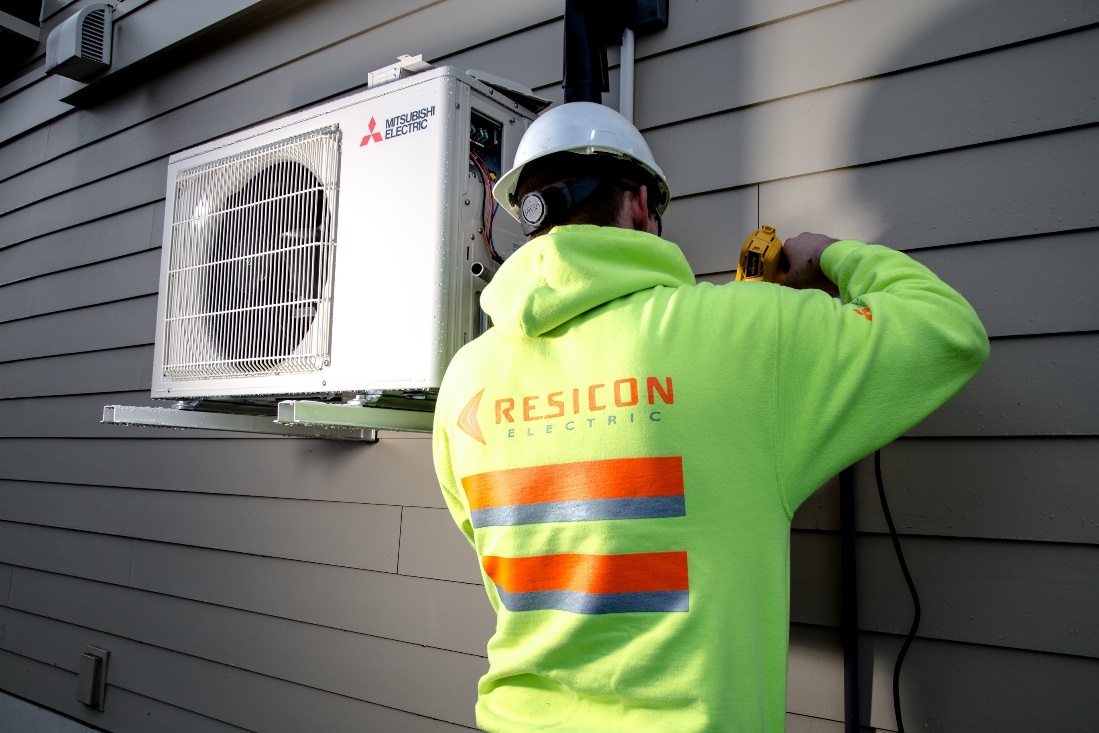We’re deep into winter now which means your thermostat dials are likely turned way up - taking your energy bill costs and greenhouse gas emissions (GHGs) with them. Today, we’re using this blog to talk about energy efficiency basics and local and federal resources to get you started improving the efficiency of your home and lowering energy bills. Let’s dive in!
Heating systems 101
Have you ever thought about how your home is actually heated? For many of us, the answer is no! Here’s a basic breakdown:
In Massachusetts, home heating systems work in a few different ways, but the most common methods are through forced hot air or hot water systems.
- Forced hot air systems use a furnace to heat up air, which is then blown through ducts to different rooms in your house via vents. The air gets heated when it passes over a heat exchanger inside the furnace. The furnace is usually powered by natural gas, oil, or electricity.
- Hot water systems, also known as boilers, heat water instead of air. This hot water is then circulated through pipes to radiators or baseboard heaters located in different rooms of your home. As the hot water flows through these devices, it releases heat into the room. Boilers can also be powered by natural gas, oil, or electricity.
The amount of energy that your heating systems consume is reflected in your bills every month. That is why it is vital to prevent energy waste, which forces your system to work harder, burn more fuel, and drives up your bills as a result. The two biggest energy waste culprits are older or low-efficiency heating systems and gaps in home insulation.
There are two main ways to solve those problems:
- Install a more efficient heating system
- Increase insulation and air-sealing to avoid heat escaping
Heat pumps are the most energy efficient heating systems available today. Heat pumps work by transferring heat from one place to another using refrigerant. In the winter, they extract heat from the outside air (even when it's cold) and transfer it inside to heat your home. Unlike fossil fuel systems that burn stuff to create heat, heat pumps just shuffle heat around, using less energy. Plus, they can run on electricity, which can come from cleaner sources. So, they're efficient, eco-friendly, and versatile – doing the heating and cooling gig all year round.
Learn more about how they work by an HVAC expert: Air-Source Heat Pumps - Massachusetts Clean Energy Center (masscec.com)
How energy efficiency supports Worcester’s green goals:
Energy efficiency is all about making your home more “efficient” i.e., using less energy while keeping your home at an ideal and comfortable temperature.
Buildings contribute 65% toward the city’s greenhouse gas emissions. By making your home more energy efficient, you will burn less fuel or use less electricity, and ultimately create fewer GHG emissions. Electrifying our home heating systems by installing heat pumps removes the direct use of fossil fuels and as the grid becomes more renewable these electrified systems will produce fewer GHG emissions.
How to get started
So, now that we have explained how energy efficiency makes your home more sustainable and saves you money, you are probably wondering how to make some changes to your home.
Meet our Smart Energy Advice program
The Smart Energy Advice program helps residents and small businesses make smart energy choices with assistance from our Energy Advocate who works for the City! In 2023, the City received a grant from the Mass Save Community First Partnership program to hire an Energy Advocate and conduct outreach to the community, with a special focus on assisting renters and landlords, low- and moderate-income residents, English isolated households, small businesses, and non-profits.
From our Energy Advocate, you’ll learn how to:
- Sign up for a no-cost energy assessment (for both residential and small businesses, non-profits and houses of worship)
- Apply for Mass Save incentives and rebates (income based – check out this chart)
- Apply for a 0% HEAT Loan (up to $50,000)
- Understand your energy bill (including the Green Worcester ElectriCITY Aggregation Program)
- Get on the discount rate through the utilities (if income eligible)
- Get started with solar (both rooftop and community options)
- Access additional related resources as applicable such as the Worcester Community Action Council, Worcester Community Housing Resources, and Worcester Lead Abatement Program
Rebates and tax credits
Now is a great time to tackle energy efficiency projects in your home because there are more rebates and incentives available than ever before.
Mass Save incentives and rebates are income based. Check out the income chart to figure out which of the three income categories apply to you. The incentives and rebates may include:
- 75%-100% off approved insulation upgrades to help improve year-round comfort and cut your heating and cooling costs by an average of 20%
- Up to $16,000 in rebates for heat pumps that heat and cool your home
- 0% financing (up to $50,000) for these projects
- No-cost air leak-sealing improvements
- No-cost energy-saving products like programmable thermostats, water-saving devices, and advanced power strips
The federal government also offers home energy tax credits and rebates for projects like updating your HVAC systems, installing new efficiency windows, weatherization work and much more. This website including a great tool for calculating your personalized incentives (both federal rebates and tax credits) based on your income and household size.
To get started on your energy savings journey, visit this website masssave.com/community-first/Worcester, call 508-372-8389, or email: energyadvocates@worcesterma.gov
Previous Post
Green Worcester ElectriCITY Aggregation Program: New Contract & What You Can Expect
Next Post
Lakes & Ponds Program



